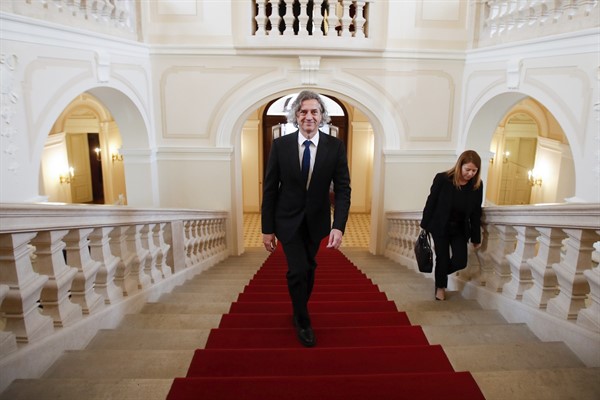Pledging to “take our country back to freedom,” businessman and political insurgent Robert Golob reveled in his victory over populist, conservative Prime Minister Janez Jansa in Slovenia’s parliamentary election on April 24. Jansa, a close ally of Hungary’s authoritarian premier, Viktor Orban, is a controversial figure who has previously been embroiled in corruption scandals and more recently accused of attacks on the free media and independent institutions.
Golob’s victory may give hope to liberals across Central and Eastern Europe that right-wing strongmen can be defeated, and many EU leaders will be relieved that Jansa is out. But Golob is just the latest of a string of political newcomers to take power in Slovenia, and he faces a considerable to-do list, not least reversing some of the policies implemented by Jansa, who remains a formidable force.
Golob’s Freedom Movement, or GS, won 34.5 percent of the vote, against 23.5 percent for Jansa’s Slovenian Democratic Party, or SDS. The conservative New Slovenia, or NSi—the SDS’ coalition partner in the outgoing government—as well as the center-left Social Democrats, or SD, and hard-left The Left, or Levica, also won seats. The GS won the highest share of the vote in Slovenia’s post-communist history and is the first party able to govern with just one other coalition partner—the SD is entering government, resuming its regular position as a junior coalition member and kingmaker, this time to Golob’s formation; Levica may also join the government.

